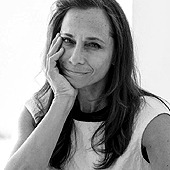
November 29, 2004
Donald Trump, Art Director: Not The Real Thing
It’s been called refreshing, healthful, sparkling and delicious; scintillating, satisfying, and an aid to digestion. Over the past 106 years, its price has steadily risen to keep apace with economic growth, as has its logo evolved from whimsically stenciled to willfully streamlined — always sporting the classic colors of the flag of its parent country.
But not until now has Pepsi opened itself up to a public makeover on national television, a redesign in the hands of a smattering of aspiring capitalists, a group whose combined knowledge of design principles might be characterized as, dare I say it — negligible.
Of course, last week’s Pepsi challenge had everything to do with boosting real ratings and little to do with portraying anything even remotely to do with real design. (And as far as a true reality check goes, let’s not forget that it was Coke — not Pepsi — who brilliantly nabbed the slogan “It’s The Real Thing” way back in 1970.) Nevertheless, The Apprentice — which is, alarmingly, tied with NBC’s The West Wing as primetime television’s most upscale program — chose the redesign of the Pepsi bottle as last week’s Trumpian challenge. (In its debut season last year, an average of 20.7 million people watched The Apprentice each week and 40.1 million watched all or some of the finale.) Does this mean that design, as a variable in daily life, has gone public — and if so, shouldn’t we be cheering?
Obviously, nothing about The Apprentice’s redesign episode evoked even an iota of the design process, and why should it? Instead, the competitors took stabs at each other’s personality flaws and presentation skills. The show routinely employs a technique of cutaway interviews, in which contestants gripe about not being heard, and complain about their teammates: such uncensored cattiness raises the notion of critique to a new form of dramatic caricature, particularly — and regrettably — when the women are featured.
Barrelling through with a true dose of reality, Pepsi’s real designers were included in this episode — meek and monosyllabic, manning their workstations like little indentured elves. To “add incentive,” one competitor paid each of them $100 — that’s right, $100 — this, for their willingness to tolerate a host of design suggestions that included a globe-shaped bottle, a bottle with two bulbous ends and a narrow middle, and my personal favorite, a typographic rendition of the word “Edge,” — yes, in molded plastic. In an online recap provided by the network, this little exercise in design futility was cited thus: “When Kelly asked about putting the hole in the bottle, the designers said it was really going to be a problem. Kelly insisted, calling the hole a “wow factor.” The designers said they would give it their best shot.”
There is a part of me, albeit a very small part, that wants my students to watch this episode. Might they witness an aspect of real-world social interaction that could provide a dose of useful reality, a wake-up call to the un-glamorous manner in which design is quite often approached and indeed, argued in the hands of non-designers? And isn’t this a very basic aspect of professional practice, beyond the vicissitudes of critique and the formalities of consensus? On the other hand, if a student of mine used the term “wow factor” in a critique, I might have to get violent — this, on the assumption that I could hold my nausea at bay.
There is little so far to suggest that Reality TV, as a genre, purports to advance the social value of any one person or thing. On this score, The Apprentice may indeed deserve its present, somewhat exalted status in the dubious pantheon of reality programs — shows boasting such stunts as spider-eating and wife-swapping. (When a design challenge shows up on My Big Fat Fiancé you can be certain that this critic will have something to say about it.) In the meantime I’m all for an economic model that imports Donald Trump’s financial genius into an equation that betters the world through good design. Maybe that’s an idea for a reality program all its own: they could call it Really Massive Change.
Observed
View all
Observed
By Jessica Helfand
Recent Posts
A quieter place: Sound designer Eddie Gandelman on composing a future that allows us to hear ourselves think It’s Not Easy Bein’ Green: ‘Wicked’ spells for struggle and solidarity Making Space: Jon M. Chu on Designing Your Own Path Runway modeler: Airport architect Sameedha Mahajan on sending ever-more people skyward
 Jessica Helfand, a founding editor of Design Observer, is an award-winning graphic designer and writer and a former contributing editor and columnist for Print, Communications Arts and Eye magazines. A member of the Alliance Graphique Internationale and a recent laureate of the Art Director’s Hall of Fame, Helfand received her B.A. and her M.F.A. from Yale University where she has taught since 1994.
Jessica Helfand, a founding editor of Design Observer, is an award-winning graphic designer and writer and a former contributing editor and columnist for Print, Communications Arts and Eye magazines. A member of the Alliance Graphique Internationale and a recent laureate of the Art Director’s Hall of Fame, Helfand received her B.A. and her M.F.A. from Yale University where she has taught since 1994.



